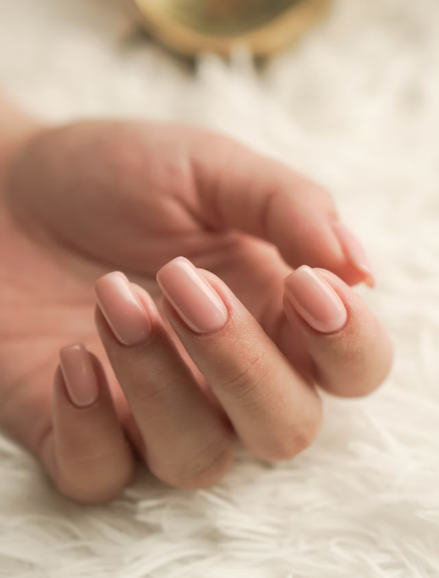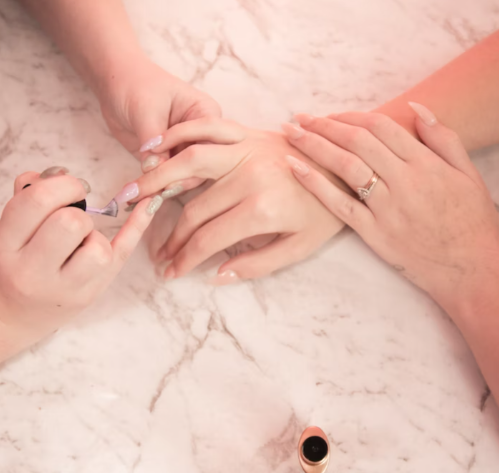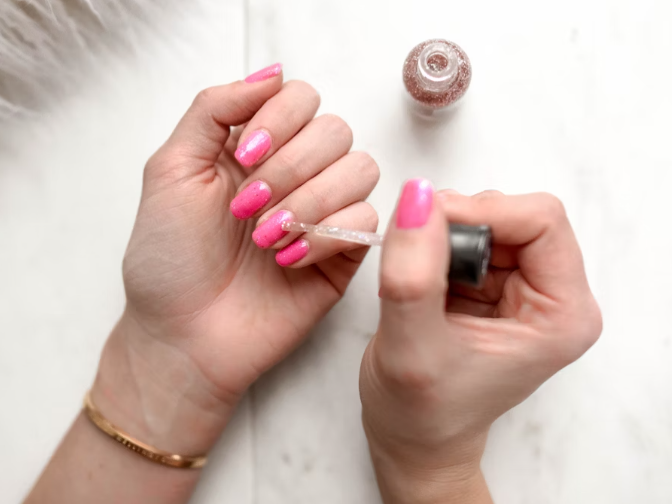Nails not only improve and enhance the appearance of your hands, but also your hands. They also provide important information about your health that can indicate nutrient deficiencies. Our nails are made up of a protein layer called keratin, which is also found in our hair and skin. On average, your nails grow at a rate of about two to three millimeters per month, which means it takes four to six months to regenerate.

Because our nails are located on the outside of the body, at the tips of our fingers and toes, they get a lot of abuse from knocks and chemicals. Regular maintenance will keep them healthy and hygienic, and there are plenty of creative ways to do this. Here are some tips and tricks for home manicure and healthy nail care.
The Importance of a Healthy Diet
A healthy and balanced diet is essential for good nail development and growth.
Vitamins and Minerals
- To keep your nails healthy, it’s crucial to consume plenty of calcium, which can be found in leafy greens like spinach and kale. This will help you avoid discoloration, cracking, or cracking of your nails.
- The body also needs plenty of complete vitamin A, vitamin C, zinc, phosphorus, folate, silica, and vitamin D, which work synergistically to maintain good nail health.
Water
- Stay hydrated.
- It is recommended to drink at least two liters of water a day to prevent chipping and improve the durability of your nails.
Iron
- Eating plenty of iron-rich foods is a must!
- Ridges and brittle nails may indicate iron deficiency in your body. You may even notice barbs and white spots on your fingers.
- Foods such as red meat, certain fish, lentils, fresh vegetables, soybeans, and whole grain products can increase and stabilize your iron levels, and iron supplementation is highly recommended if you are vegetarian or vegan.
DIY Nail Art Tips
The first step in nail care is to make sure you have all the necessary supplies.
Supplies
- Nail polish remover
- Cotton balls
- Cotton tip
- nail file
- Nail clippers or scissors
- Nail bumper block
- Nail buffers (polishes)
- Primers and topcoats
- nail polish
- vaseline
- Hand and nail polish or moisturizer
1. Prepare Nails Before Painting
Use nail polish remover and cotton balls to remove old nail polish. I recommend using a non-acetone polisher instead of acetone polishezer because it preserves the natural lube of the nails, preventing them from becoming brittle.
If your nails are long, it is best to soak your hands in a bowl of warm water and essential oils (if available) before trimming them with a nail clipper; This softens the nail and prevents pressure from tearing when removing unwanted lengths.
2. Prune
It is very important to trim your nails regularly with sharp scissors or nail clippers, if they become dull, it can damage your nails. The best way to trim your nails is to cut them vertically to medium length.

3. Shape
- Pick up the nail file and start trimming your manicured nails. Rule of thumb when filing nails – Never see the sides and tips of your nails with a file, as this will make your nails more likely to peel and break.
- Gently rub the file over the nail only in one direction.
- Starting from the outer edge (nail bridge), make sure to file straight up.
- Once you reach the tip, you begin to pull the file towards the center.
4.Buff
It’s time to polish your nails.
Polishing your nails is like brushing your teeth – it brightens your nails and makes them look younger.
Polishing nails stimulates blood circulation and helps remove accumulated natural oils that affect the duration of the final polish.
You can use seesaw movements on each nail down to the stratum corneum.
After polishing with a sponge block, you can wipe the top of your nails with a smooth polish to make your nails sparkle.
Rinse the nail with water to remove nail dust from the outer edges, and then it is ready to polish.
5. Apply Primer
- A primer must be applied before applying nail polish as it can make the final colored coating smoother.
- It is important to use a quality primer as it nourishes, strengthens, fills the alveolar ridge and prevents stains.
- Today, some primers are standard with colored nail polish.
6. Apply Polish
Apply a small amount of petroleum jelly to the skin at the edge of the nail with a cotton swab. If you paint outside the lines, this will help clean up the edges. Make sure your nails are not coated with petroleum jelly, otherwise nail polish glue will not stick to your nails.
The key to successful polishing is to apply enough product to the brush to cover the entire nail. Each fingernail only needs to be stroked three: one along the center and then one along each side.
Use a clean cotton swab and nail polish wash to remove all nail polish from the stratum corneum and outer edge. Allow this coating to dry before applying a second layer using the same technique.

The final step is to use a high-quality topcoat to ensure the shine and durability of the nail polish. After drying, massage a small amount of moisturizer or oil into the cuticle and outer edge of the nail.
7. Disinfection Tools
It’s time to clean up!
Good disinfection of the tool during the next manicure is very important to prevent the spread of germs.
- Place the tool in a basin of warm water, place in an antibacterial solution, and clean it with a toothbrush.
- Rinse thoroughly with warm water and dry naturally with a towel, then put it away for next use.
8. Stratum Corneum Care
Hand massage stimulates blood flow and contributes to healthy nail growth. However, if you are constantly moving with your hands in your daily routine, this will naturally stimulate your fingertips, promote good blood circulation, and thus allow your nails to grow quickly and strengthen them.
Cuticle care is important, especially when your work involves areas where your hands are often immersed in water. Too much water can take away sebum (natural oils), causing dry skin, hot water can cause telangiectasia, leading to redness, and large amounts of alcohol can dehydrate the skin and nails, forming hard nails and causing premature aging.
I recommend staying hydrated and applying a hand and nail moisturizer to your hands every day, massaging the cream onto the stratum corneum to prevent them from hardening and uncomfortable.
Extra Tips to Remove Stains
- To remove stains and clean nails, place your hands or feet in a large bowl filled with half-filled room temperature water and add 1.5 tablespoons of lemon juice, a mild astringent that helps remove stains.
- Soak for a few minutes, then rinse your nails with warm tap water.
- Finally, massage the moisturizer into the hands and feet, paying special attention to the nails.